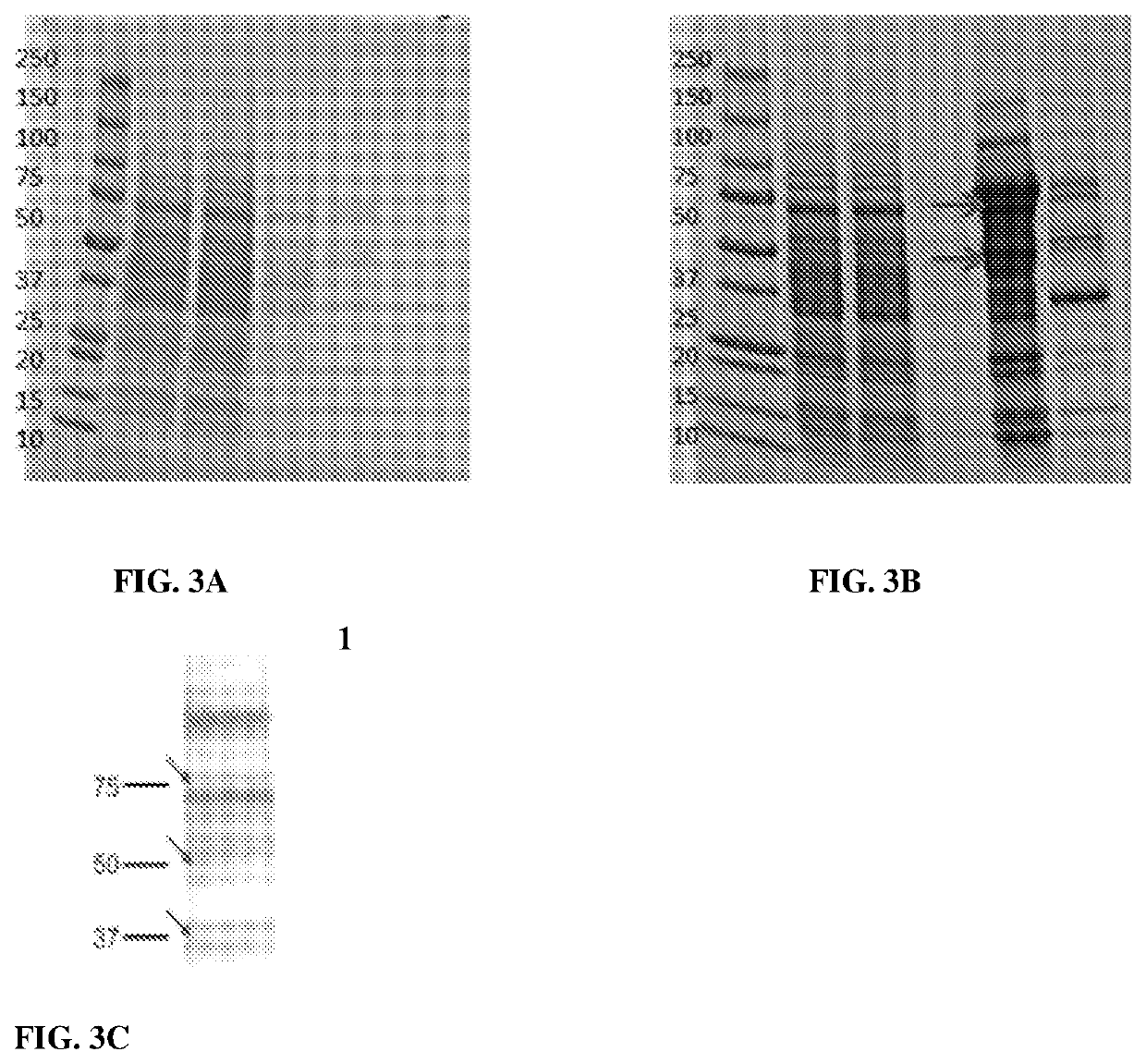Methods of producing enzymes using pichia cells
a technology of pichia cells and enzymes, applied in the field of recombinant expression systems, can solve the problems of inability to produce active enzymes, recombinant production, and cell adhesion and arrest, and achieve the effect of improving the migration of implanted cells
- Summary
- Abstract
- Description
- Claims
- Application Information
AI Technical Summary
Benefits of technology
Problems solved by technology
Method used
Image
Examples
examples
Material and Methods
Construction FUT6 Recombinant Vector and Transformation
OF Pichia Pastoris
[0093]Briefly, a pPink-aHC vector was used (Invitrogen) to integrate the human FUT6 cDNA encoding amino acid 35-359 of the FUT6 protein sequence that omits the cytoplasmic and transmembrane regions of full length human FUT6, and encompassed the entire catalytic domain of the enzyme. The vector was propagated in E. coli strain TOP 10F (Invitrogen). The recovered DNA was linearized with restriction enzyme and then the digested DNA were used to transform Pichia Pastoris strains according to the manufacturer's instructions (Invitrogen). Stable transformants were selected on minimal medium agar plates (MD plates) for further processing.
[0094]Construction of Recombinant Vector and Transform to E. coli Cells
[0095]A) The cDNA encoding soluble form of human FUT6 were generated by PCR with FUT6 primers and the FUT6 contained six histidine (His-tag) at N-terminus and must have a phosphorylated 5 ‘ blu...
PUM
| Property | Measurement | Unit |
|---|---|---|
| Fraction | aaaaa | aaaaa |
| Fraction | aaaaa | aaaaa |
| Length | aaaaa | aaaaa |
Abstract
Description
Claims
Application Information
 Login to view more
Login to view more - R&D Engineer
- R&D Manager
- IP Professional
- Industry Leading Data Capabilities
- Powerful AI technology
- Patent DNA Extraction
Browse by: Latest US Patents, China's latest patents, Technical Efficacy Thesaurus, Application Domain, Technology Topic.
© 2024 PatSnap. All rights reserved.Legal|Privacy policy|Modern Slavery Act Transparency Statement|Sitemap



